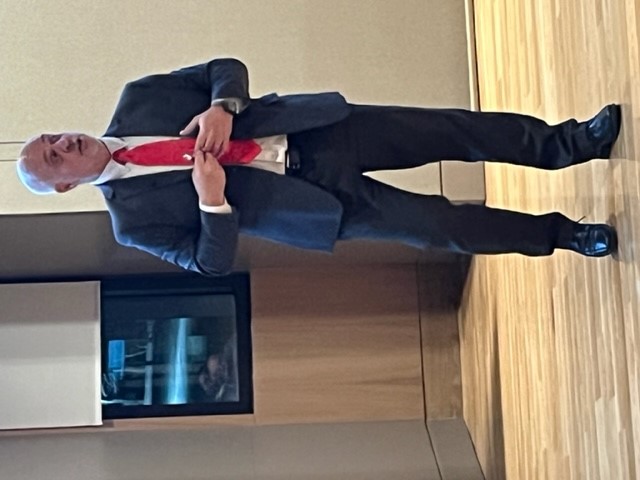Campus News
February 6th, 2023
Heckman: Fusion energy is coming
Former DOE official speaks to large group at Performing Arts Center

Kurt Heckman, speaking Wednesday night at the Performing Arts Center at Garrett College, says commercial applications of nuclear fusion could be "on the grid in a decade."
"The old joke used to be, ‘Fusion energy is 25 years into the future – and always will be,' " Kurt Heckman told a packed recital hall Wednesday night at the Performing Arts Center at Garrett College. "That's not true anymore. I think we'll be looking at fusion energy on the grid in a decade – and maybe sooner than that."
That was one of the biggest takeaways as the former U.S. Department of Energy (DOE) official talked about some of the recent developments in the field of nuclear fusion. Another was how nuclear fusion is likely to dramatically change the worldwide energy equation.
"Through nuclear fusion, the lithium in a common laptop and the hydrogen from a bathtub of sea water can create more energy than 80 tons of coal," said Heckman, who served as DOE's director of Secretarial Boards and Councils during the Trump Administration.
The former aerospace engineer noted that nuclear fusion is accomplished without most of the issues associated with nuclear fission.
"There are no greenhouse gases, no meltdown potential, no proliferation material, and no long-term radioactive waste," said Heckman. "And every country in the world can potentially have domestic energy in abundance."
Heckman said a recent scientific breakthrough is just the latest step in the pathway to fusion energy. That milestone took place this past December at the National Ignition Facility (NIF), located at the Lawrence Livermore Lab in Livermore, California.
"Scientists used a large array of 192 lasers pointed at a single target," the Friendsville resident explained. "Energy in; enginery out - low and behold, they broke the barrier. For the first time, there was more energy coming out than going in." This seminal event was possible due to improvements in the machines built to house these reactions.
"The engineering challenge has always been creating a machine that could withstand the necessary heat and neutrons," said Heckman. "We now have machines creating temperatures 10 times the temperature of the middle of the sun.
"So, we've actually gotten to fusion conditions for years. Now we're trying to get fusion reactions that can go on for long periods of time without breaking the machine," he added.
Heckman said moving fusion energy from a neat scientific breakthrough to readily available commercial applications will likely become possible due to "American capitalism" that has funded advances in lasers, high temperature super-conductors, artificial intelligence, and other advanced materials to service existing economic demands.
"Since the Reagan Administration, fusion energy science was solely a long-term government investment," said Heckman, who added that the involvement of the private sector is "the real breakthrough."
"There are now companies attracting significant commercial funding to turn nuclear fusion into a commercial energy source," said Heckman, highlighting the $1.2 billion in capital investment attracted by TAE Technologies, which is based in Foothills Ranch, California.
Heckman foresees a possible future where smaller, more efficient nuclear fusion facilities replace the large, aging nuclear fission reactors.
"The commercial research being done now," said Heckman, "could get us to where we have small fusion reactors in places like McHenry and Friendsville."






